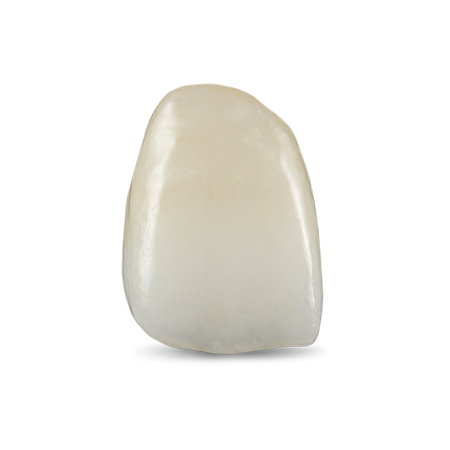
The Crystal UTML restorations from Apex Dental Laboratory offer incomparable esthetics and strength for a long-lasting, anterior solution. Fabricated out of the superior Crystal material, this zirconia seamlessly integrates with surrounding dentition for a lifelike smile for every patient. It is capable of providing such esthetics because of its high translucency and natural color gradient. Crystal UTML is a versatile restorative option that can easily be used for cosmetic veneers, crowns, or bridges.
This innovative nanoceramic is so versatile, it can be used for any permanent, adhesive, single-tooth restorations including crowns, crowns over implants, inlays, onlays and veneers.
When esthetic expectations are high and it is important that the restorations match surrounding natural dentition or other existing restorations.
Do not use hydrofluoric acid (HF) etching, and do not use phosphoric acid to clean the restoration.
Clean the restoration with alcohol and dry. Verify that the surface is free of contamination, including milling debris, milling fluids, saliva, grease, acetone, fit checker, etc.
Bond the restoration to the tooth with a light or dual-cured adhesive resin cement. Depending on cement, apply the appropriate primer or bonding agents. If no primer is recommended, apply silane to the bonding surface of the restoration according to the instructions provided with the silane.
Always follow the instructions for resin-based materials provided with the cement selected. Light-curing should be used with thin veneers as dual-curing composites may cause a slight yellowing after curing. A microbrush glued to the veneer or a stick (adhesive) can be used as a retention tool. Fixing the veneer with a finger allows more uniform distribution of pressure during the adhesive cementation.
Adding-on to Restorations
Directions for Build-up or Adding-on to Restorations: You can make additions and repairs to Crystal® Ultra restorations with methacrylate-based light-cured restoratives. Restorations made from Crystal® Ultra must not be reworked with tungsten carbide tools as such instruments may damage the material. Use only diamond coated milling tools or special polishing tools desired for hybrid ceramic-resin materials. When reworking, use water and exert only slight pressure. This material should not be fired under any circumstances during processing, finishing or build-up/add-on.
Build-up or Add-on guidelines are as follows:
Important Note: Since dust is formed when grinding dental ceramic products, always wear a face mask or grind when wet. Use an extraction unit in the laboratory.